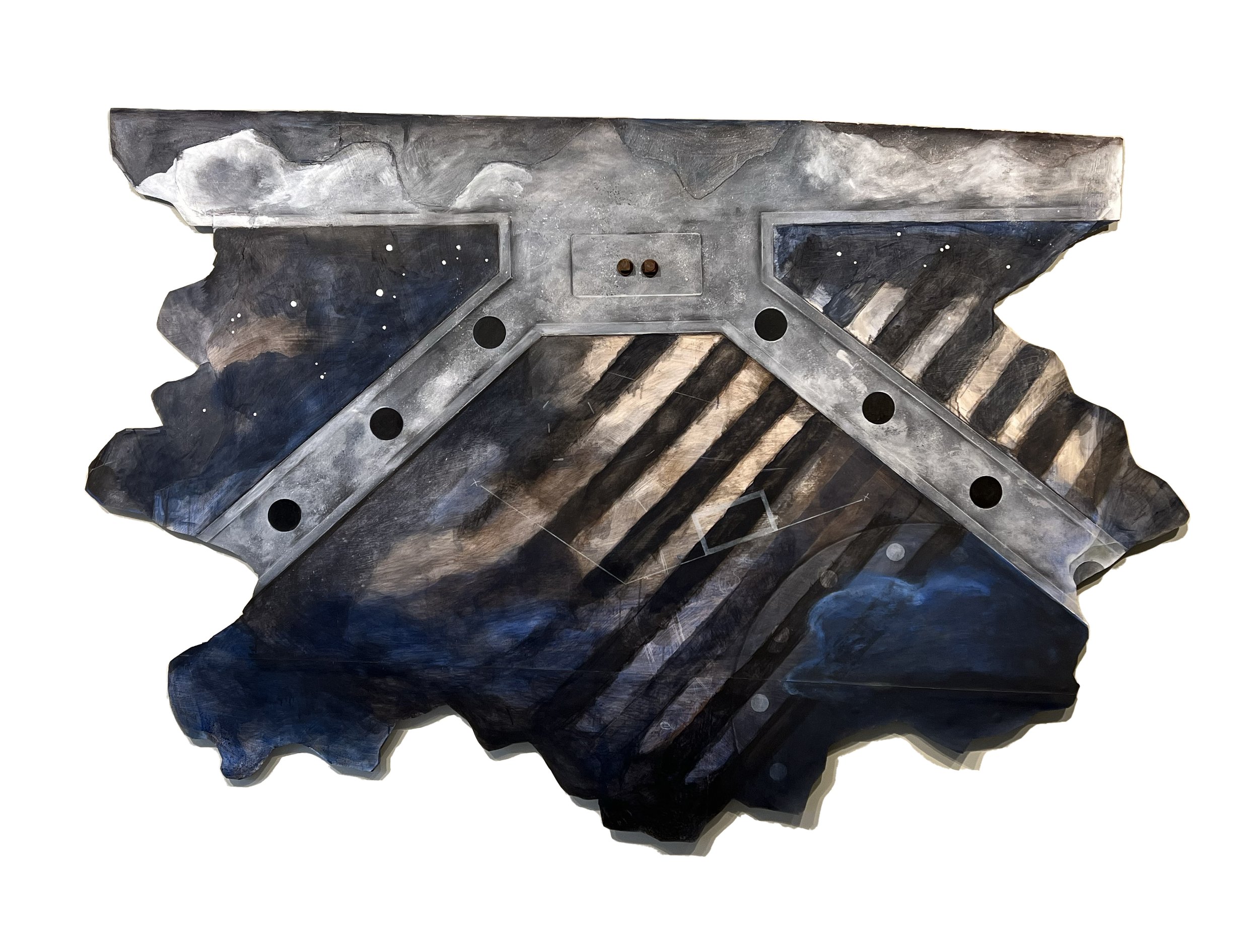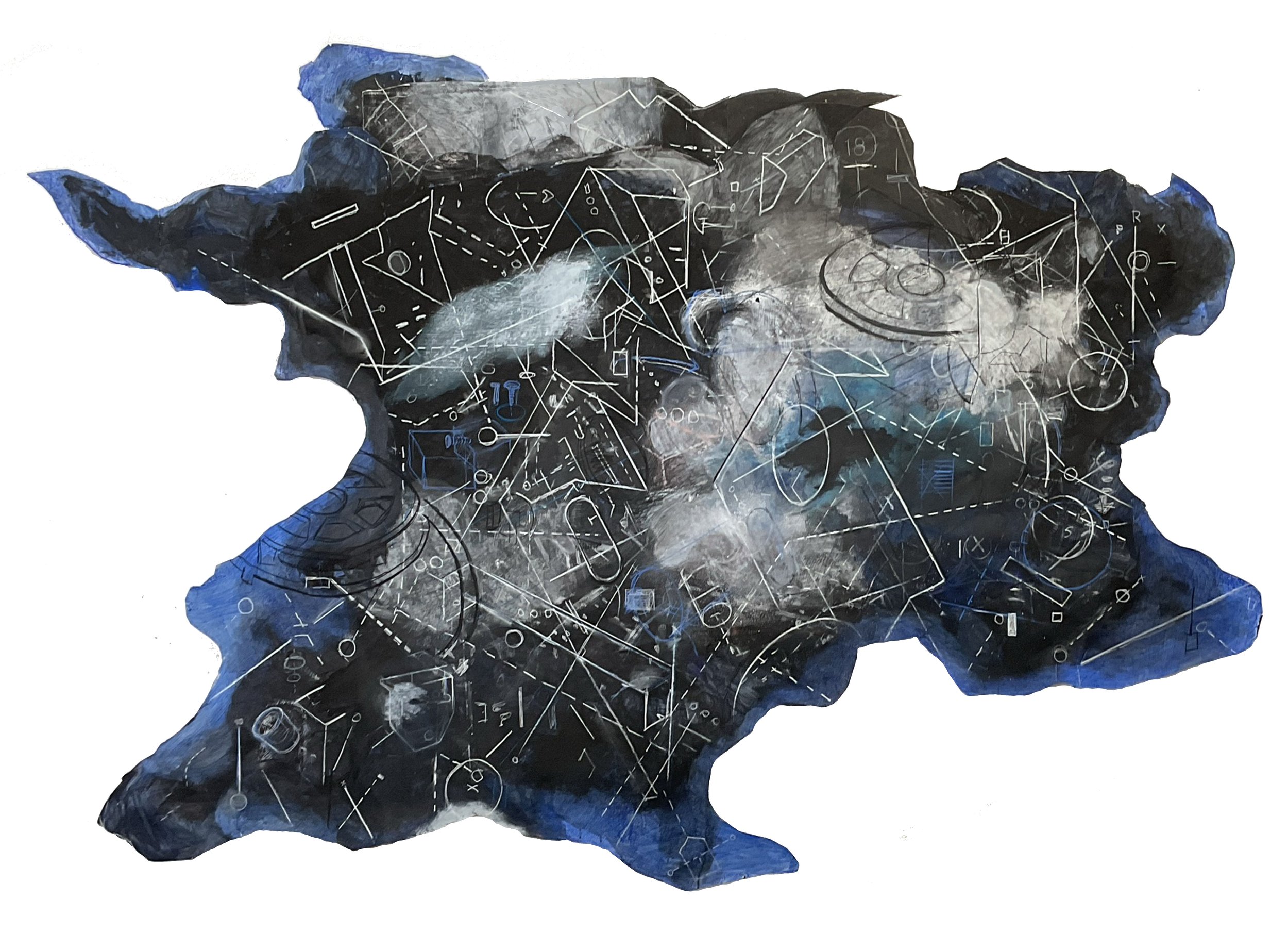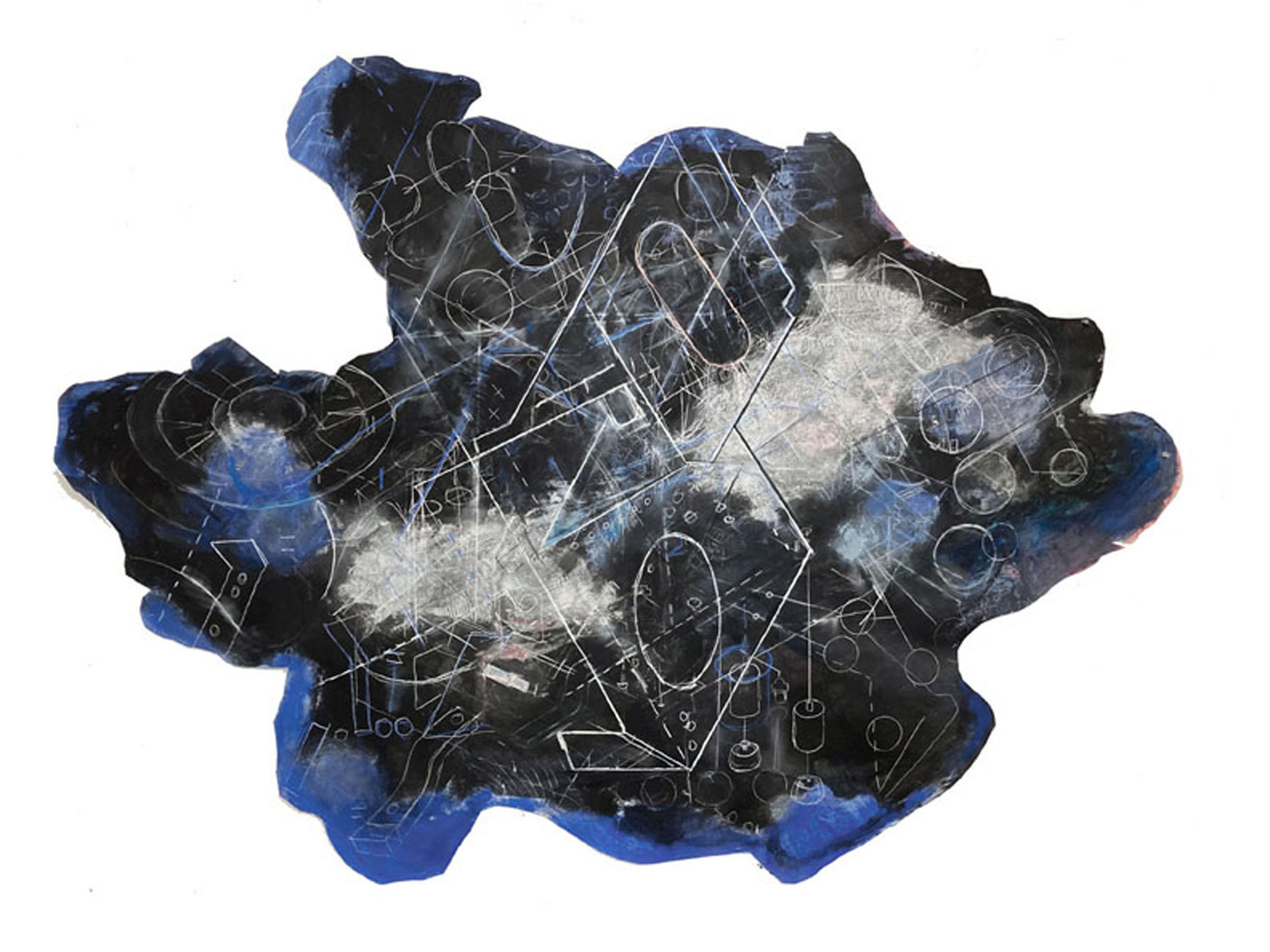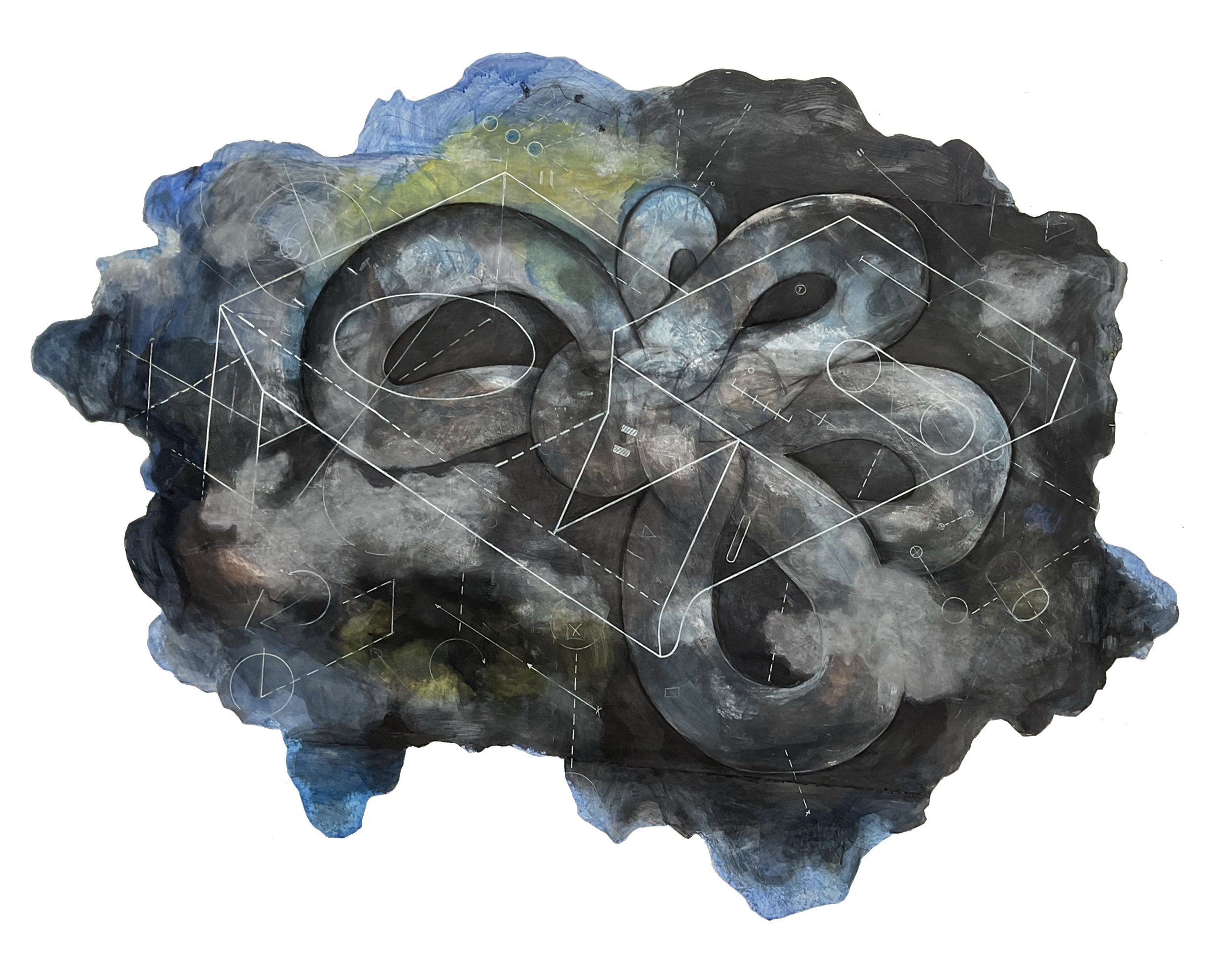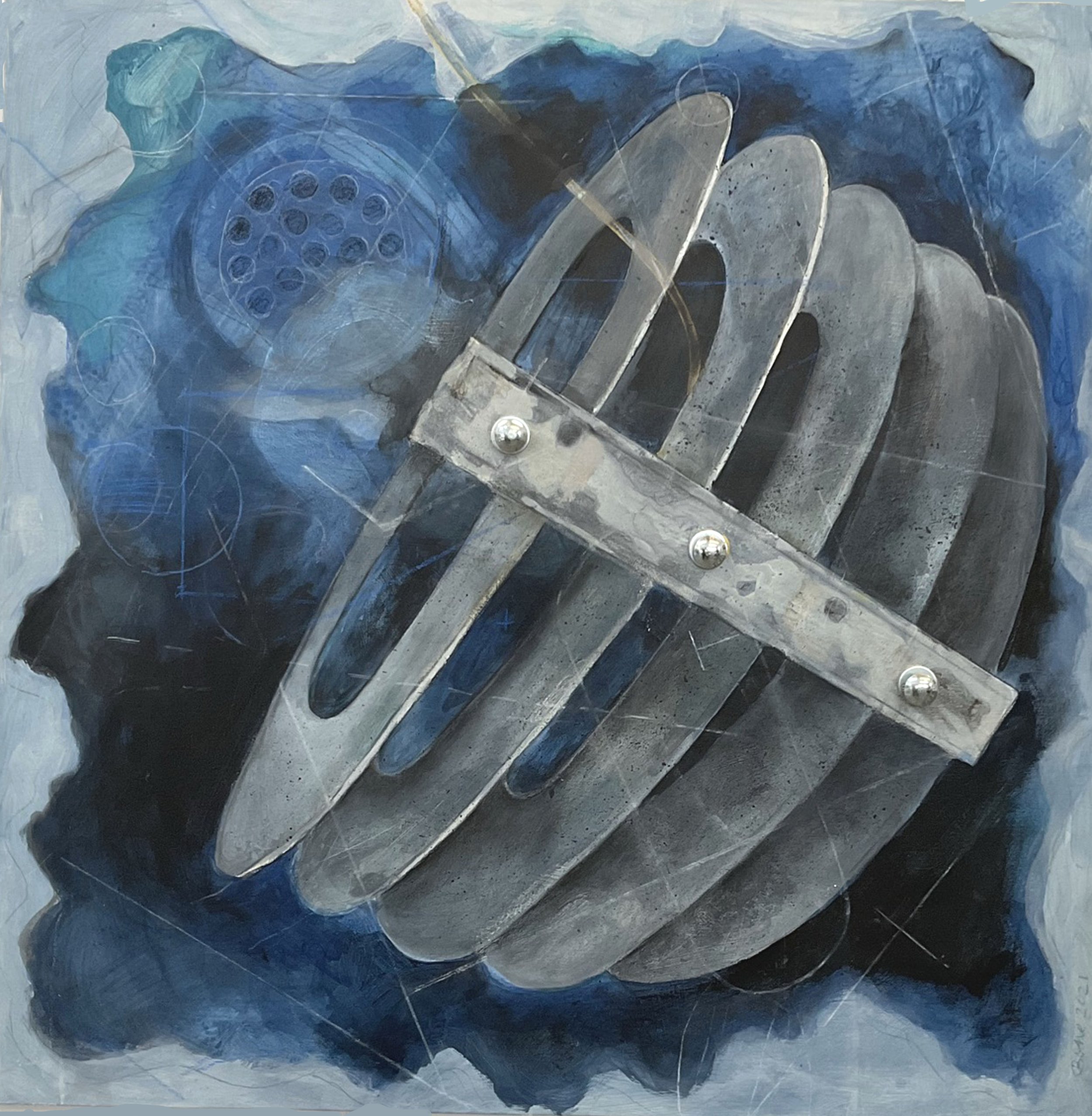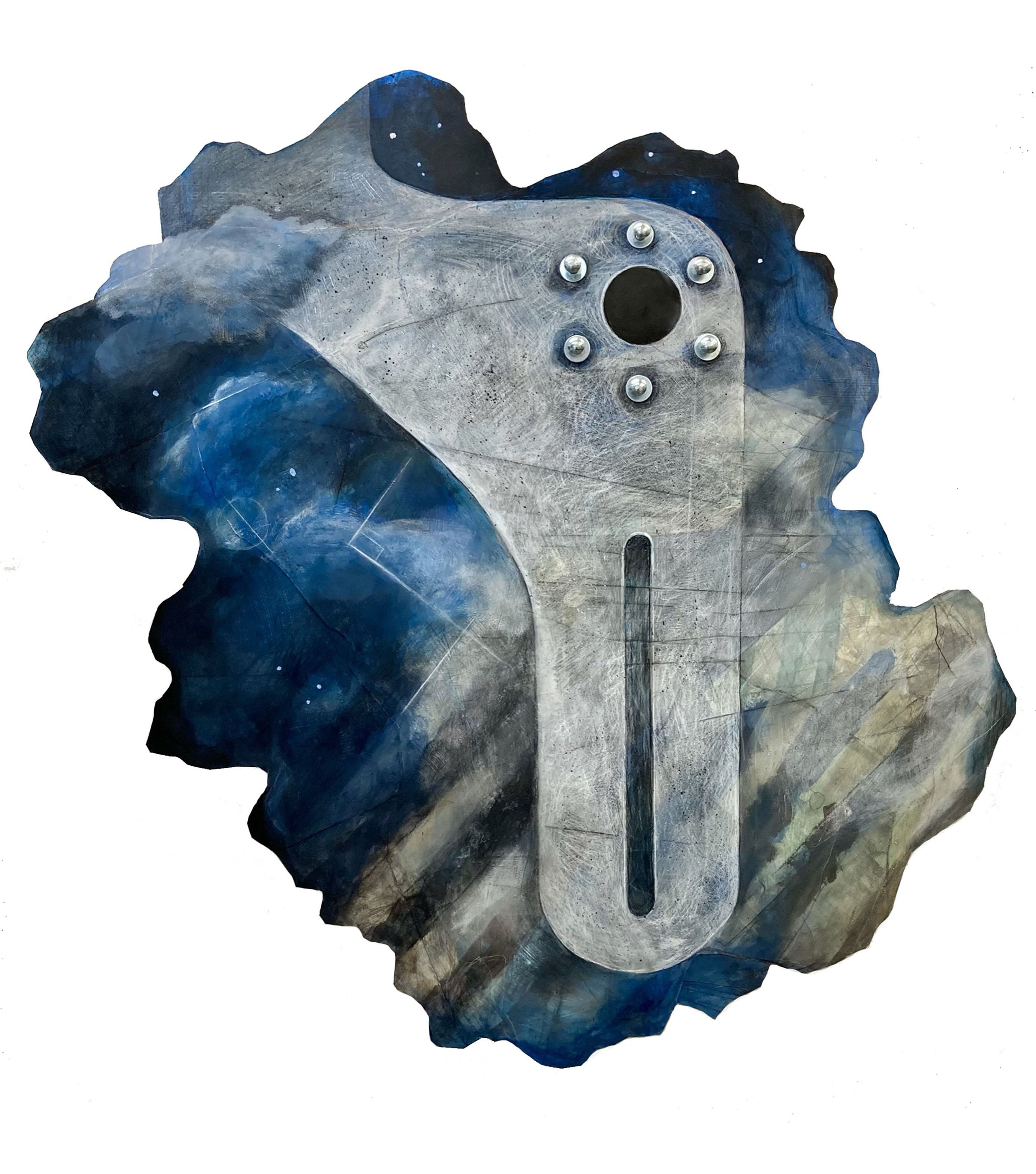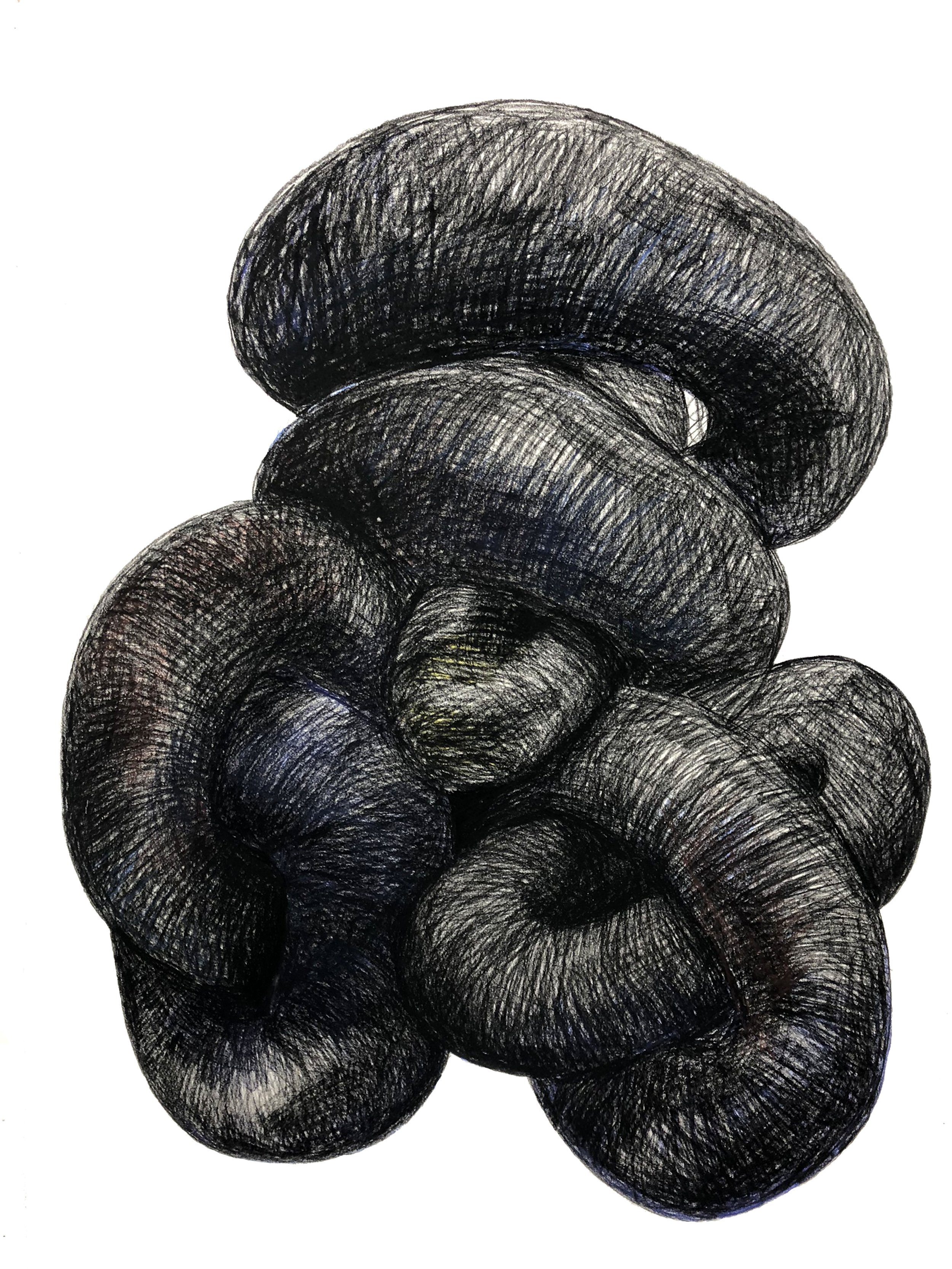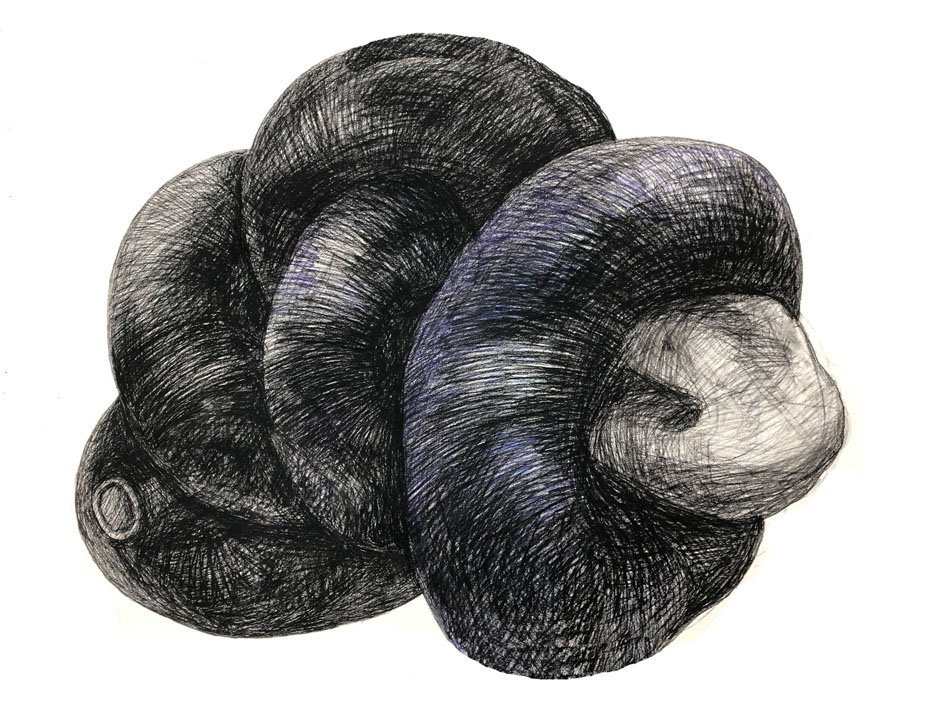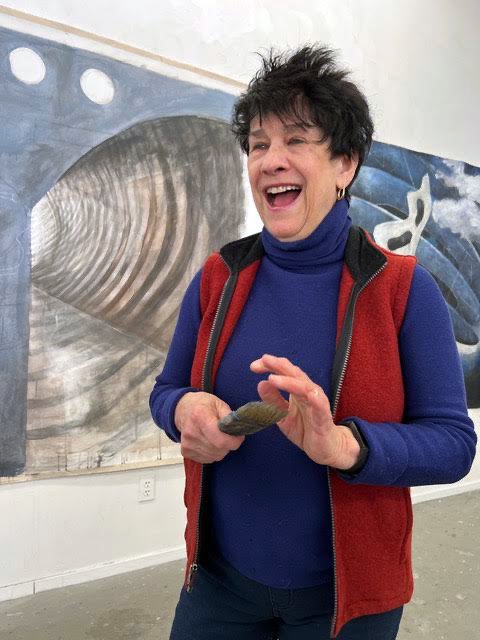Martha Bone is a Hudson Valley-based artist whose large-scale assemblages on paper and canvas are excavations from her rich personal history. Working from her photographs, she constructs images by painting, scraping, sanding, and often puncturing the surface of a piece. Her work is sculptural and free-form, as she adds to a piece by gluing on sections as needed. She studied dance in New York for many years, which influences her process and informs her body-oriented imagery. The screws and bolts that she attaches to her drawings stand in bold relief to the fleshy, intestinal shapes that spill over the surface.
MH: Your sculptures and your two-dimensional work have a monumental feel to them. There’s the feeling that they want to take up a lot of space. Why do you think it’s important to you to work this large? What does it give you that, say, miniature painting wouldn’t?
MB: I have to work large. There’s something wonderful about being able to move into a painting with your whole body. I studied modern dance right after college and loved the immediacy of the art form. My gestures on the paper or canvas often come from the joy of moving around while I’m working, so my work is very body-oriented. I work like a sculptor, digging into the piece, using a cheap, worn down brush like a shovel. I sometimes accidentally create holes in the paper, and I like the mark that it makes.
MH: It sounds like your work is the expression of an internal process, rather than an external observation.
MB: It’s both. It comes from within and without. That saying, “As on earth, so it is in heaven” – that’s how I think about it. There’s nothing in here that’s not out there. There were several years where I wasn’t interested in making anything beautiful. I was working through some things, to get to a place of truth in myself, and you don’t get there right away. It’s taken me a long time, but I’m there now. I’m using external reference points more than I did in the past: machinery, objects, bone, metal, clay, and even bologna shows up in my work.
MH: Can you describe the inner drive that pulls you into your studio every day? Are there words for it?
MB: I have to do it, even if I don’t feel like it on a given day. It’s more than a compulsion, it’s karmic. If I don’t do it, it backs up on me. Whatever it is that I’m working on, I want to work through it. It’s not easy to come to the studio every day. Some days it’s torture! But there’s no choice – I have to do it, even if it means coming into my studio and ruining something.
MH: You spent some significant time in India. This must have affected your work.
MB: I originally went to India in the 80s because I was supposed to meet this guy in Jaipur, and he didn’t show up, so there I was in India, all by myself. I met some people who showed me how to navigate the culture, and after that I fell in love with it. It was the underbelly of India that drew me in. I’ve always been interested in what’s hidden, what’s happening behind the scenes. But in India, nothing is hidden – everything is out in the street, even death, and I saw bodies carried down the street on a stretcher. I started a business called “Sleeping Buddha”, where I designed a line of textiles and had them block-printed in India. There were these huge, black cauldrons where they mixed the dyes with a stick over a wood fire – all of this stuff spoke to me and influenced my later work. I went to India every year just because it got into my blood.
MH: When I first met you, you had your awesome studio on West 28th Street. But when they kicked the artists out of the building, you did the studio scramble for a few years, which I know was a total hassle for you. And now you’re in your home studio, near Hudson. How is that working out? How has your work changed since leaving your Manhattan studio?
MB: Well, I’m not running back and forth anymore, so I can get up early in the morning and start working, and I can work after dinner as well. I get a lot done, and I think about my work all the time. Unfortunately, I don’t have a lot of people to talk it over with, but other than that, it’s working out welI. I’m a New York girl and I miss the city, but I love working here. I think the change in my work has to do with having less stress than I did in the city.
MH: All artists want to be successful, but we define success in different ways. What does success look like for you? Has it changed over the years?
MB: When I was young I was a designer/illustrator, and I was successful at both. But then I moved from the Upper West Side to a fabulous loft on East Broadway, and that’s when I realized that I was an artist. I was 25. Those were great days! You didn’t have to have a website or Instagram account, you could just walk into a gallery and show them your slides and they’d give you a show. I showed with Louise Bourgeois and Joan Semmel at Alan Stone, with Kiki Smith and Carolee Schneemann at The Erotic Art Gallery; I did a performance at St. Marks in the Bowery Church with three dancers and a sound artist. I studied modern dance at the Merce Cunningham Studio, the Martha Graham School, and with the principal dancers from Alwin Nikolais Dance Company. The last person I studied with was Meredith Monk, who had a huge influence on my work. She was minimal and expressive – her work really mirrors how I look at things. So things were going amazingly well, but it felt like there was a piece missing. I didn’t feel like I could keep it up. I went to an ashram upstate for a short rest and ended up staying for nine years. I didn’t do any artwork during this time, but I was doing deep work on myself, piecing things together, which is reflected in my current work. I think success changes as you get older. It doesn’t always look the way you want it to, but sometimes things work out the way they need to.
MH: Sometimes you’ll hear an artist being referred to as an “important artist”. This turn of phrase has always annoyed me. Do you think this implies that some artists are more important than others?
MB: I don’t like that expression either. Writers and critics like a certain kind of artist and I respect that, but it’s not always what I like. If it doesn’t resonate with you, then it’s not important for you. My work has a spiritual component that curators aren’t necessarily interested in. I’m doing work that I feel good about, regardless of who likes it or whether it’s considered “important”.
MH: The New York art world is very competitive. Lots of artists are making interesting art, but only a small percentage get to show their work. Do you have any insights about how it all works? Do you care?
MB: Yes, I care, but I try not to think about it too much. I think the artists who get shown have done the research and made the necessary connections, and the work usually fits into certain styles or parameters. It really depends on how much effort you put into it. In the past, I haven’t put in a lot of effort, because I didn’t care all that much. I just wanted to do my work. I think in a lot of ways the art world is broken. It needs to open up and create new ways of presenting artists’ work.
MH: It’s hard not to be cynical these days. Our country’s politics are disgraceful, and the planet is seriously in peril. Is it still relevant to make art? Does it sometimes feel like you’re preparing for a solo show on the Titanic?
MB: You can’t count on anything. We don’t know what’s going to happen. You just do your work because you have to, regardless of what’s going on out there.
MH: What’s the best part about being an artist?
MB: You have a way to express your ideas and processes. I’ve had a lot of things to work through, some of it karmic, some from past lives, and it all came to the surface when I was in my 20s. It was very intense, like an erupting volcano, and the only thing I could do was grab a marker and sketch what I was experiencing. It was very body-oriented and I had no filters – it all just came out and I drew it. Then in the 70s I had a close relationship with a spiritual teacher who pulled a lot of baggage out of me that had deep roots. And I was an artist, so I had a way to express this and work with it.
MH: What is something about yourself and your work that you’d like people to know, that might not be apparent?
MB: I’m feeling a lot of compassion for the human race and for where we’re headed. I think that it’s showing up in my work. Maybe it’s the technique, maybe it’s just that I’m a compassionate person, and that’s coming through more than it used to. A lot of my older work had a certain edge to it, but my new work is more beautiful than I would have done in the past. There’s a certain generosity that’s showing up in my work and in my relationships that wasn’t there before.
